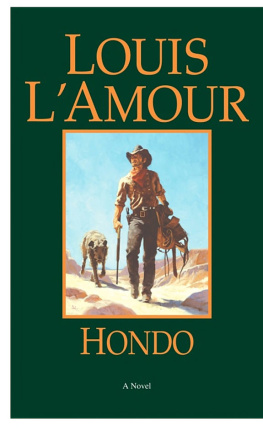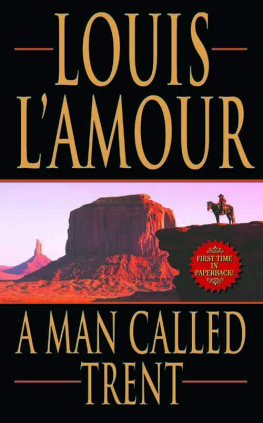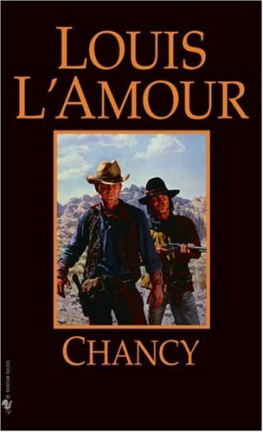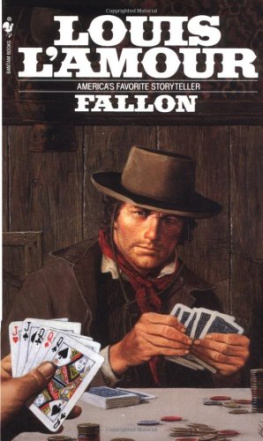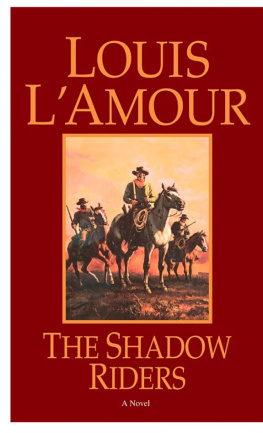Louis LAmour - Lonigan (Bantam Classic)
Here you can read online Louis LAmour - Lonigan (Bantam Classic) full text of the book (entire story) in english for free. Download pdf and epub, get meaning, cover and reviews about this ebook. year: 2005, publisher: Bantam, genre: Adventure. Description of the work, (preface) as well as reviews are available. Best literature library LitArk.com created for fans of good reading and offers a wide selection of genres:
Romance novel
Science fiction
Adventure
Detective
Science
History
Home and family
Prose
Art
Politics
Computer
Non-fiction
Religion
Business
Children
Humor
Choose a favorite category and find really read worthwhile books. Enjoy immersion in the world of imagination, feel the emotions of the characters or learn something new for yourself, make an fascinating discovery.

- Book:Lonigan (Bantam Classic)
- Author:
- Publisher:Bantam
- Genre:
- Year:2005
- Rating:3 / 5
- Favourites:Add to favourites
- Your mark:
- 60
- 1
- 2
- 3
- 4
- 5
Lonigan (Bantam Classic): summary, description and annotation
We offer to read an annotation, description, summary or preface (depends on what the author of the book "Lonigan (Bantam Classic)" wrote himself). If you haven't found the necessary information about the book — write in the comments, we will try to find it.
Lonigan (Bantam Classic) — read online for free the complete book (whole text) full work
Below is the text of the book, divided by pages. System saving the place of the last page read, allows you to conveniently read the book "Lonigan (Bantam Classic)" online for free, without having to search again every time where you left off. Put a bookmark, and you can go to the page where you finished reading at any time.
Font size:
Interval:
Bookmark:


Contents
To Bob Christy
Foreword
S EVERAL OF THE stories that follow have to do with the large-scale movement of cattle from place to place. In the days of the cattle drives for which the west became famous, those movements usually began in Texas and went north to the railroad shipping towns in Kansas, though cattle were often driven on to northern ranges in Wyoming, Montana, the Dakotas, or Canada.
The largest herd that could be handled with easeif that term could be applied to any cattle drivewas about 2500 head. A few larger herds were moved, but they proved difficult and so were rarely attempted.
It was customary to move such herds at twelve to fifteen miles per day, and often less, depending on the existing grass and water. The idea was to take time and let the herd fatten up as it moved.
In the days of the early drive the horns on a longhorn would average over four feet wide, and those with horns of six feet and better could be found in almost every herd. There were a few, of course, that exceeded that breadth, but they were the exception.
Stampedes were the bane of the drovers existence for more weight could be run off in a night than could be put on in a week, and aside from the loss of many head of cattle, the weight loss was enough to cut all the profit from such a drive.
The longhorns driven north from Texas were wild animals, rounded up from the plains of eastern Texas and driven from the thickets. Once trail-broken and away from their old grazing grounds, they moved along easily, but at night or when bad weather was breeding, they were easily startled, and once they had stampeded, were easy to start again. Twelve to eighteen men could handle a herd of the size I mention, although the numbers varied. Within a few days, and in some cases a few hours, the herd would sort itself out. One steer, or sometimes a cow, would take the lead and maintain it. The others would string out, and usually the same bunch could be found leading the herd and another lot bringing up the rear.
Unless the next days drive to water was a long one, a responsible drover would take his time getting the herd off the bedding ground where they had slept the night before, and unless grazing along the route, they were usually stopped for a noon break and permitted to graze and rest.
Usually when on a drive, the cattle would be strung out over several miles of trail, each steer holding to his own place in line. Even after a stampede, as soon as the herd was strung out again, each steer would find his place in line, usually beside some particular companion. Among cattle there were always those who assumed leadership, moving right to the front of the herd and remaining there. Such a one was Old Blue, famous on Texas ranges for many years, who led herd after herd over the trail to Kansas.
If possible, a trail-drive boss would water his herd then move along two or three miles before bedding them down for the night. Such cattle settled down in much better shape and started off better in the morning.
Cattle drives were not all from Texas into Kansas and farther north. In earlier days herds had swum the Mississippi, and during the war, were driven to southern markets. Other herds had been driven to Chicago and even into Ohio and Pennsylvania. These, however, were infrequent, and most of the drives were from Texas north. It has been estimated that in the space of some fifteen years, more than ten million cattle were driven from Texas.
Cattle were also driven from Oregon into Montana and Wyoming. These were rarely longhorns, but mostly Durham with some Herefords, and relatively less trouble than the longhorn.
There are still cattle drives nowadays, although for shorter distances and with fewer head. And there are always a few volunteer riders to accompany any such drive, men from other occupations who love the experience of the drive, its hard work and friendly associations. My friend Charlie Daniels, leader of the Charlie Daniels Band, is one such.
AUTHORS NOTE
T HE F INE A RT OF R USTLING
No doubt the rustling of cattle started on the second day after the first cattle ranch was established, and the ingenuity of the rustler has increased over the years. Many of the early wars in Scotland and Ireland were wars over stolen cattle, and many of the customs of western men can be traced to Scottish Highlanders.
There was no set pattern of stealing cattle. Of course, the usual way was simply to round up a few cows on the range and drive them off. Another common practice was to simply drift cattle into a remote corner of the range, then, when the occasion offered, nudge them a little farther away, often into some remote canyon where the grass and water were good and the cattle not likely to return to old pastures. In due time the brands would be altered by a good rewrite man and the cattle drifted into the thiefs own herd.
Sleepering cattle was another device. During the round-up, when each ranch was represented by its own hands or perhaps simply a repa cowhand representing brands whose hands were not officially involved in the roundupall cattle were being checked off and the unbranded marked with the appropriate brands and returned to the herd to be released on the range. Rounded up and unbranded cattle were held in a special herd to be branded in following days, and during the night those cow thieves engaged in sleepering would drive some of the unbranded stock over to the branded herd. Later, after the cattle were released on the range, they would cut out and brand the unbranded stock for themselves.
At first, when the cattle business was new, beef had no value and much wild, unbranded, or maverick stock ran loose on the range. When the railroad was built into Kansas and there was a demand for beef in the eastern states, cowhands would ride out with a running iron to brand anything they found, and an artist with a simple running iron could create any brand he wished. As the cattle business became big business, running irons were outlawed and only stamp irons were permitted. The stamp iron has a cattlemans brand which can be burned on the side of a steer with one move. Anyone caught with a running iron could be and often was hung simply on suspicion that he was a rustler.
Rustlers, of course, were not to be pushed aside so easily, and many found they could be just as inventive and artistic with a saddle cinch ring, held by two sticks after being heated in a fire, as with a running iron. Some twisted and heated barbed wire did almost as well.
Of course, by killing and skinning the steer, the alteration of a brand could be seen plainly on the inside of the hide. Stock killed for sale to meat markets left a hide to be disposed of where it was not likely to be found. Often such hides were buried, and occasionally found by a rancher with a rope suitable for providing the rustler with a suspended sentencesuspended from the nearest tree.
Down along the border it was for a time the custom to steal cattle in Mexico, and trail them over to sell in the States. Returning, the outlaws would steal cattle in the States to be sold back in Mexico. It is reported that King Fisher of Uvalde, the gunfighter, had a nice operation like this until he reformed and became a deputy sheriff.
Unfortunately he took a trip to San Antonio, and in trying to keep Ben Thompson out of trouble, was killed beside him, leaving a weeping widow and some fatherless cows.
The stories of rustling are many, and new devices are being invented all the while. Although horse-riding bandits are out of fashion now, the stealing of cattle is not, only now it is done with trucks.
Next pageFont size:
Interval:
Bookmark:
Similar books «Lonigan (Bantam Classic)»
Look at similar books to Lonigan (Bantam Classic). We have selected literature similar in name and meaning in the hope of providing readers with more options to find new, interesting, not yet read works.
Discussion, reviews of the book Lonigan (Bantam Classic) and just readers' own opinions. Leave your comments, write what you think about the work, its meaning or the main characters. Specify what exactly you liked and what you didn't like, and why you think so.

